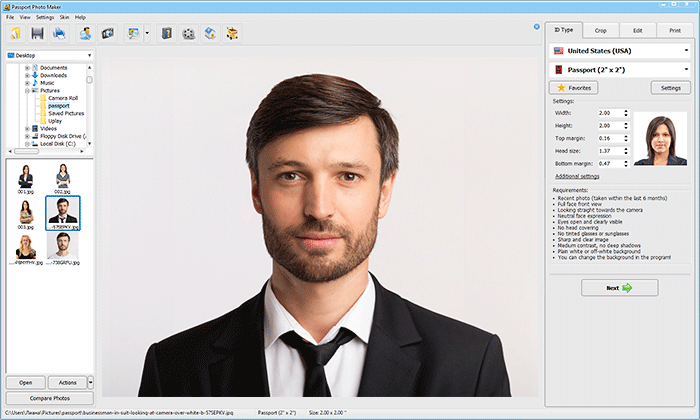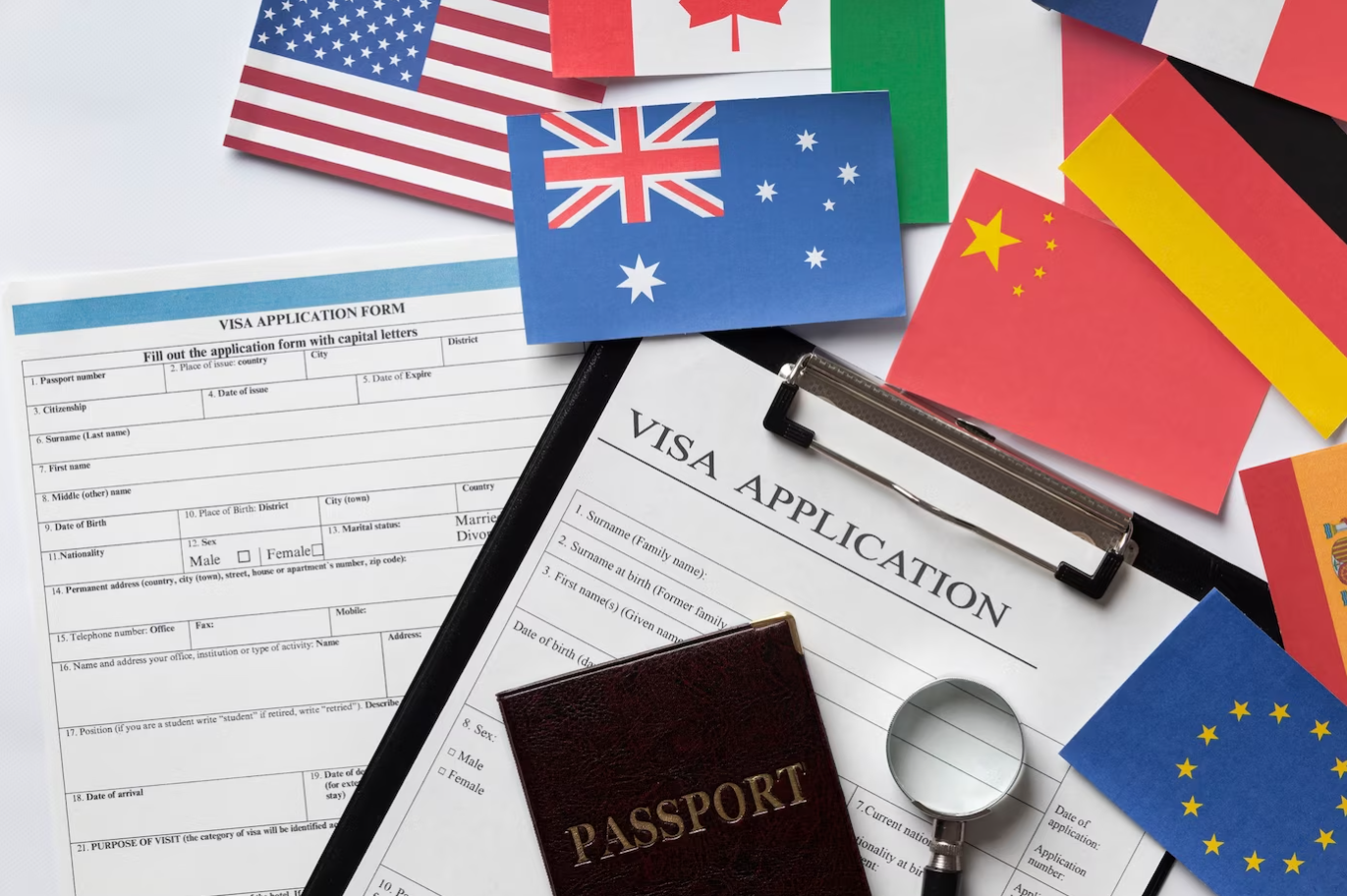The days of agonizing studio visits and squinting passport photos are over! Enter the world of passport photo online: a convenient, tech-savvy alternative that simplifies the process from selfie snap to official document. Whether you’re a seasoned globetrotter or a first-time passport applicant, this comprehensive guide unpacks everything you need to know about mastering the intricacies of passport photo online: from understanding specific country requirements to utilizing handy digital tools and navigating printing options. Get ready to ditch the photo booth blues and embrace the ease of perfecting your passport picture, all from the comfort of your own screen.
Overview of Passport Photos
Passport photos hold a unique significance in the realm of official documentation, serving as a visual representation of an individual’s identity. These small, standardized images are a crucial component of passport applications, visa processes, and even driver’s license renewals. The primary purpose of a passport photo is to establish the identity of the document holder, creating a visual link between the person and the official documentation.
The traditional approach to obtaining passport photos involved a visit to local photography studios or retail outlets equipped with dedicated passport photo services. Skilled photographers would ensure that the photos adhered to the specific requirements set by government agencies. These requirements typically include aspects such as the dimensions of the photo, the background color, and specific guidelines regarding facial expressions and clothing.
However, the landscape of obtaining passport photos has evolved significantly with the advent of online services. The digital era has introduced a new level of convenience and accessibility for individuals seeking these essential images. Today, various websites and mobile applications enable users to create and order passport photos from the comfort of their homes. These online services often come equipped with tools that allow users to edit and adjust their photos to meet the stringent standards set by government authorities.
The shift from traditional to online passport photo services reflects not only technological advancements but also a response to the growing need for efficiency and user-friendly options. As individuals embrace the digital age, the process of obtaining passport photos has become more streamlined and adaptable to the diverse lifestyles of people around the world.
In the following sections of this guide, we will delve deeper into the distinctions between traditional and online passport photo services, explore the specific requirements governing passport photos, discuss the possibility of capturing passport photos at home, and provide guidance on choosing the right online service to meet one’s specific needs. Understanding these facets is essential for anyone navigating the landscape of passport photo acquisition in the modern era.
Traditional and Online Passport Photo Services
In the realm of passport photo services, individuals historically relied on traditional methods that involved a visit to local photography studios or retail outlets offering specialized passport photo services. Professional photographers, equipped with the knowledge of official requirements, would guide individuals through the process of capturing passport-compliant images. This traditional approach ensured that the photos met the specific standards set by government agencies, including dimensions, background color, and facial expression guidelines.
- Traditional Services: Traditional passport photo services offered a personalized experience, with photographers using their expertise to capture high-quality images. These services often came at a cost, reflecting the skill and effort involved in producing photos that met the stringent requirements of official documents. While the traditional approach is still widely available, the landscape has expanded to include digital alternatives.
- Online Services: The rise of online services has transformed the passport photo acquisition process, providing individuals with an efficient and accessible alternative. Numerous websites and mobile applications now offer users the ability to create, edit, and order passport photos from the convenience of their homes. These platforms often integrate user-friendly interfaces and provide guidelines to ensure that the photos comply with official standards.
| Criteria | Traditional Services | Online Services |
| Process | In-person visit to a photography studio or retail outlet | Online creation and editing of photos on websites/apps |
| Professional Guidance | Personalized assistance from skilled photographers | User-friendly interfaces with guidance on compliance |
| Cost | May incur higher costs due to professional services | Often more cost-effective or competitively priced |
| Convenience | Requires physical presence at a specific location | Can be done from the comfort of one’s home |
| Turnaround Time | Typically immediate or within a short time frame | Varies but often offers quick delivery options |
| Flexibility | Limited by the operating hours of physical locations | Available 24/7, providing flexibility for users |
Passport Photo Requirements
Obtaining passport photos involves adhering to specific and often stringent requirements set by government authorities. These requirements are in place to ensure that the photos serve their primary purpose—establishing a clear and accurate visual representation of the passport holder’s identity. Failure to meet these criteria can result in rejected applications or delays in document processing.
- Dimensions and Composition: One of the fundamental requirements for passport photos is adherence to specific dimensions. Different countries may have slightly varying standards, but common dimensions include 2 inches by 2 inches (51mm x 51mm) or 35mm x 45mm. The image must capture the full face of the individual, with the head centered and occupying a significant portion of the frame.
- Background: The background color of passport photos is typically required to be plain and light-colored, often white or off-white. This ensures a clear contrast between the subject’s face and the background, facilitating accurate identification. The goal is to eliminate distractions and maintain a standardized appearance across all passport photos.
- Facial Expression and Clothing: Passport photo guidelines often specify a neutral facial expression with both eyes open and directed towards the camera. The individual should not smile broadly or make exaggerated facial expressions. Additionally, regulations may dictate specific clothing requirements, such as the prohibition of hats, headgear, or uniforms unless for religious reasons.
- Lighting and Image Quality: Appropriate lighting is crucial for a passport photo. The image should be well-lit, avoiding shadows on the face, and ensuring a clear and sharp representation. The photo should be in color, with high resolution, and free from any distortion or manipulation.
- Additional Country-Specific Requirements: It’s important to note that each country may have its own set of specific requirements for passport photos. These could include rules regarding head coverings for religious purposes, acceptable eyewear, or even digital specifications for online submissions. Individuals should familiarize themselves with the guidelines provided by the relevant government agency to avoid complications during the application process.
Understanding and meticulously adhering to these passport photo requirements is essential whether using traditional or online services. Most online platforms provide guidance and tools to help users align their photos with these specifications, but users should remain vigilant to ensure compliance and prevent potential issues during the document application process.
Passport Photography at Home
In recent years, technological advancements and the widespread availability of high-quality smartphone cameras have empowered individuals to capture passport photos in the comfort of their homes. This DIY approach provides a convenient alternative to traditional and online passport photo services, allowing individuals to take control of the entire process.
Capturing passport photos at home involves creating a setup that adheres to the specific requirements set by government authorities. Individuals are tasked with selecting an adequately lit area, ideally with natural light, and ensuring a plain background that meets the required color standards, typically white or off-white. The removal of potential distractions from the background is crucial to maintain a clear and unobstructed focus on the individual.
- Utilizing a high-resolution camera, preferably the rear camera on a smartphone, is key to achieving image clarity. Placing the camera on a stable surface or using a tripod helps avoid blurriness, and positioning it at eye level ensures a straightforward and accurate representation of the individual.
- When framing the shot, individuals must follow the specific dimensions required for passport photos. The head should be centered in the frame, with the face occupying a significant portion. Maintaining a neutral facial expression, with eyes open and looking directly at the camera, is essential to meet the established standards.
- Attention to lighting is critical to prevent shadows on the face. While natural light is ideal, artificial lighting can be used if evenly distributed. Harsh shadows or reflections that could distort the image should be avoided.
Regarding attire, individuals must wear clothing that adheres to passport photo guidelines. This includes avoiding hats, headgear, or clothing that may obscure the face. Specific clothing requirements outlined by the relevant authorities should also be observed.
Taking multiple shots is advisable to ensure there are options to choose from. Reviewing each image is crucial to confirm compliance with passport photo standards and to address any potential issues with lighting, framing, or expression.
Capturing passport photos at home offers several advantages, including being a cost-effective option and providing unmatched convenience. The DIY approach allows individuals to pay meticulous attention to detail, ensuring that the photos meet every requirement. However, challenges include the need for technical know-how and the risk of non-compliance. Individuals should also verify whether the chosen institution or agency recognizes self-taken photos, as some entities may have specific requirements or prefer photos from accredited sources.




